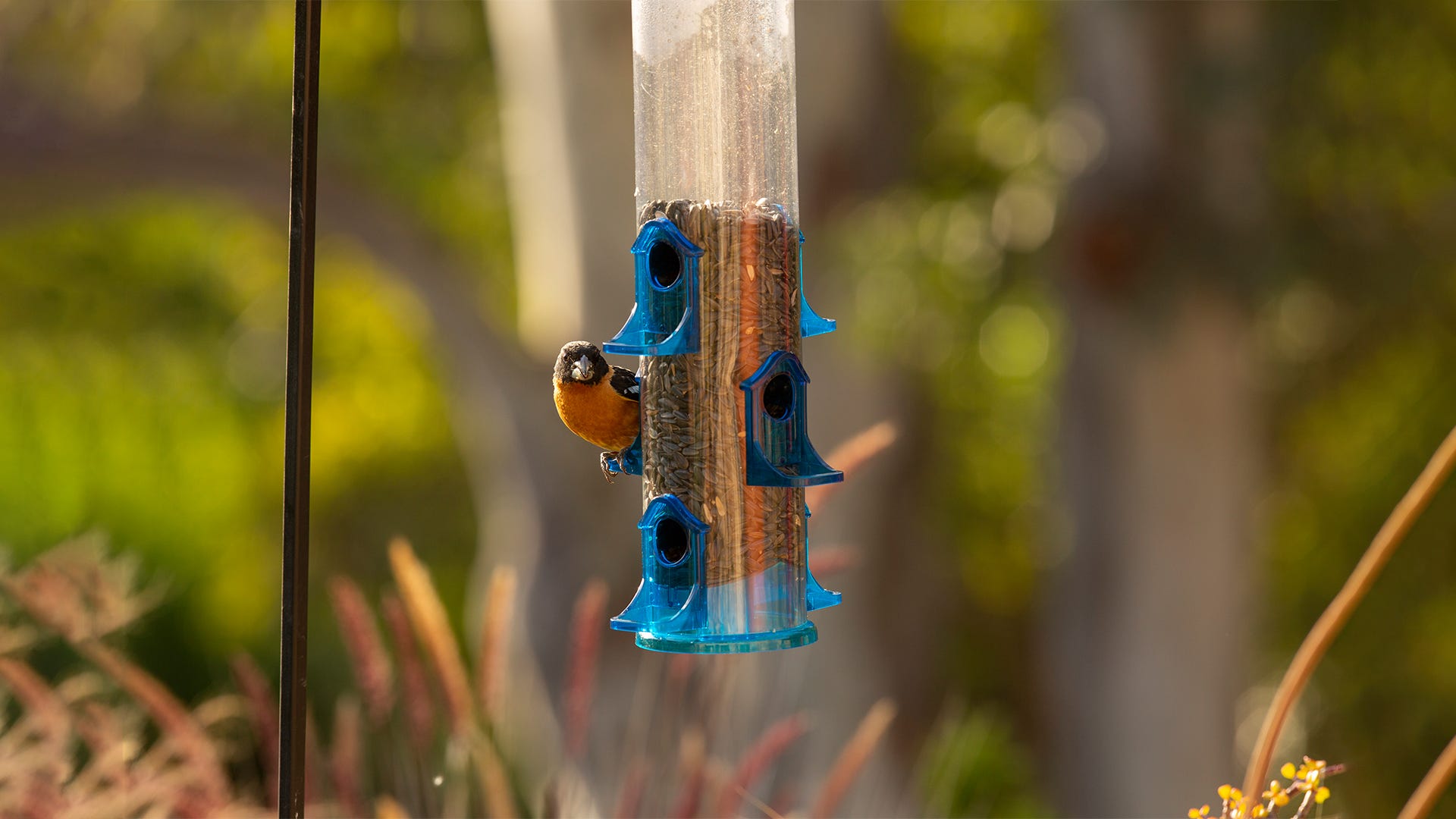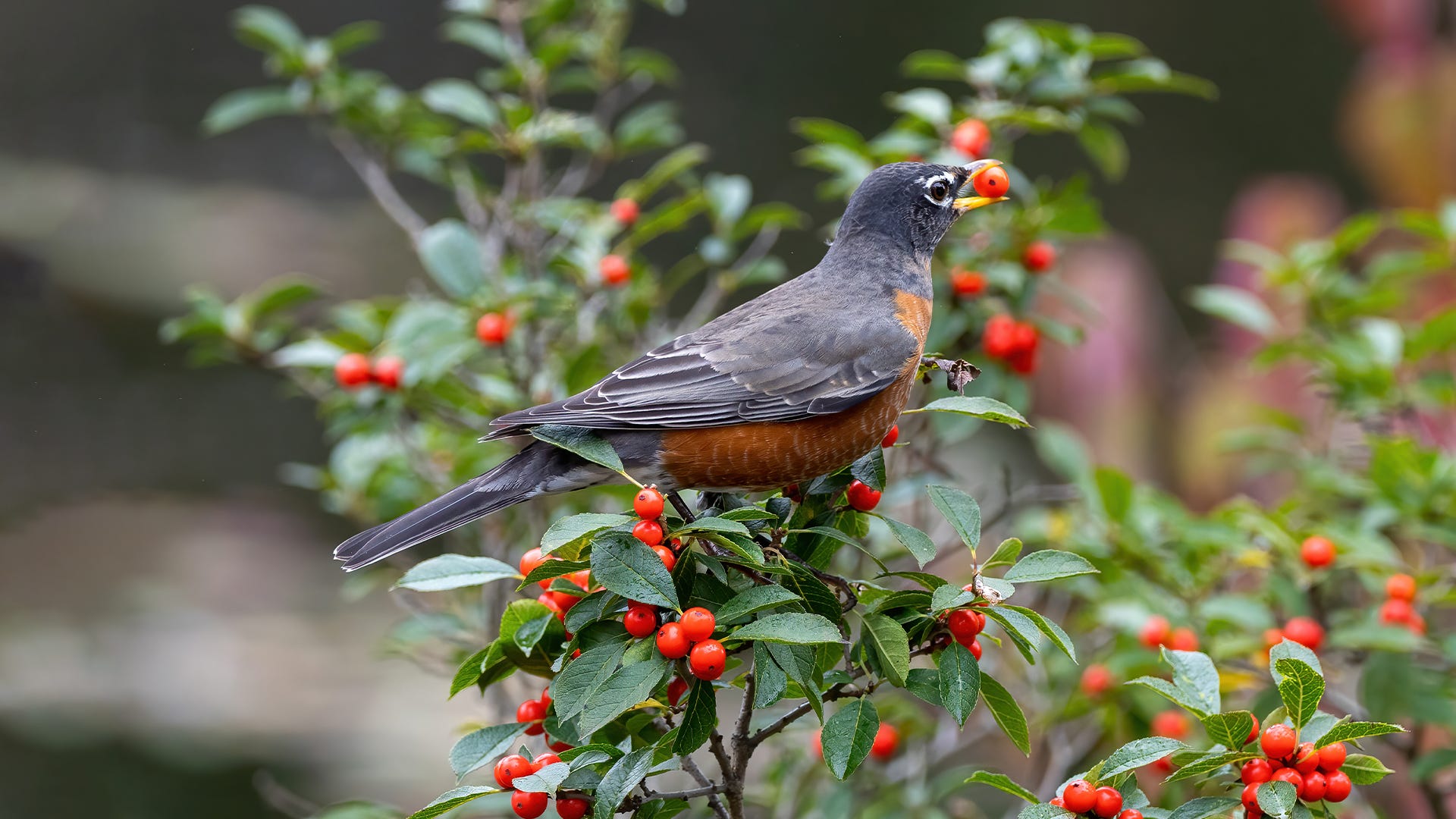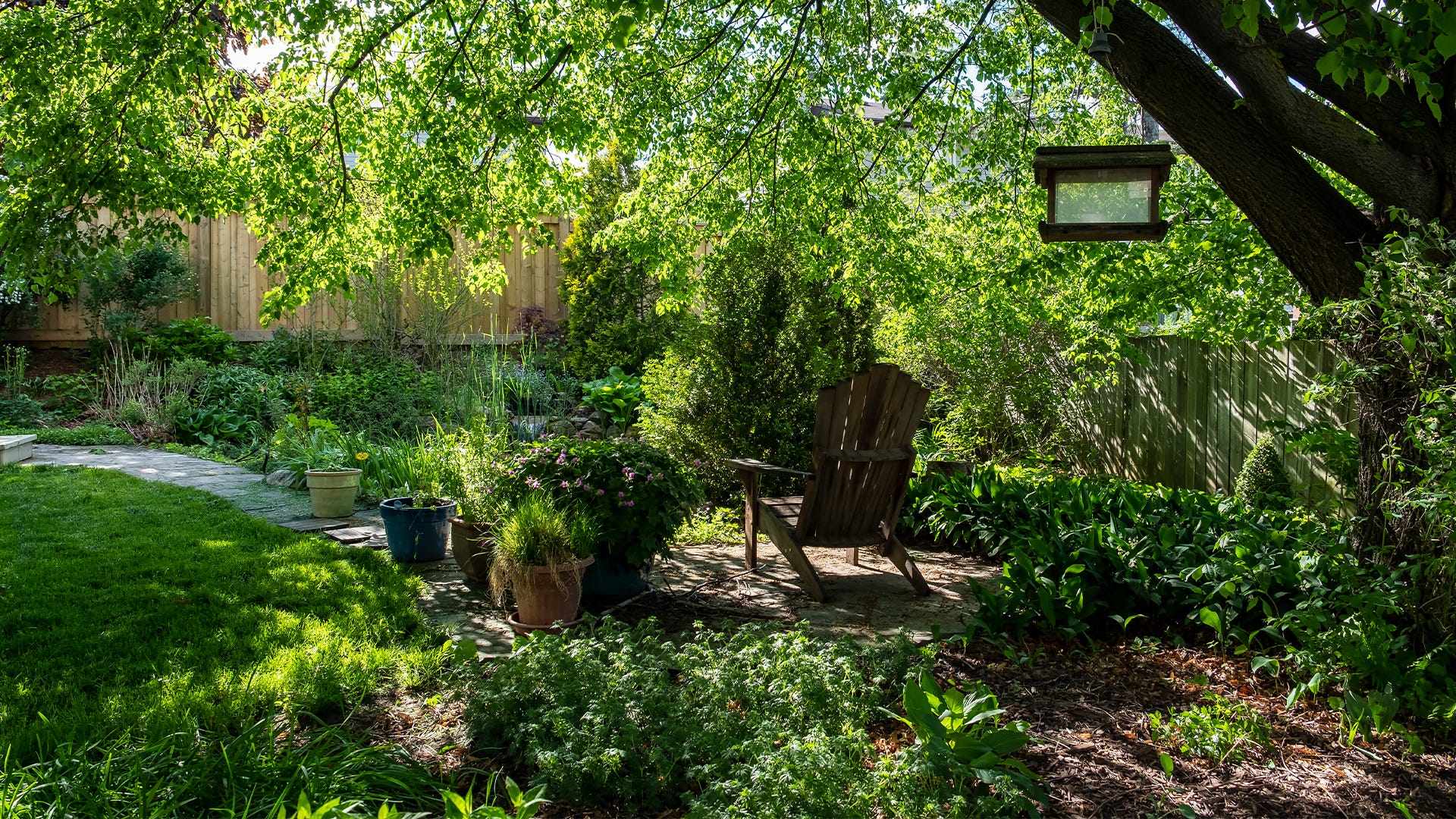
Many bird watchers get their start by watching birds at their backyard feeders. If your backyard is lacking a variety of bird species, learning how to grow a bird-friendly garden is your answer. Before you buy seeds or start digging the perfect spot for a new bush, learning more about natural habitats of the birds you want to attract to your yard will help your bird-friendly garden be a success.
Native Plants for Bird Habitats
Visiting natural habitats such as parks and preserves is a good way to learn what native plants will attract different species of birds to your backyard. Take notes and pictures of the plants, bushes and trees in the habitats you visit. Take note of the structure and layout of the plants. You will want to recreate a similar habitat in your backyard in order to attract new birds to your garden.
It’s helpful to map out your property to begin planning. Include whatever plants, trees and shrubs that are already growing in your yard. What plants do you already have that will benefit birds? A common backyard plant, the Black-Eyed Susan, is ideal for providing seeds for birds in early summer. After summer ends, this plant can be left to dry up for a winter food source.
Layered Landscaping
A bird-friendly garden should offer various layers of resources. Each layer is vital in creating a thriving habitat for birds. The specific natural materials found in each layer helps different species build nests whether of mud from the ground, leaves from shrubs or bark from the trees.
- Tall trees: Some species will sing from the highest, commonly deciduous trees such as the Maple and River Birch. These trees can grow to over 30 feet, so planning according to your property is important.>
- Shrubs: Even species that frequent the highest of trees need shrubs to build their nests, such as the Button Bush and Elderberry Bush.
- Ground Feeding: There are many species that search the leaves for their food, another reason why carefully selecting shrubs is important for your bird-friendly garden.
- Shelter: Creating a dense shelter offers birds a place to perch, nest and escape from predators. A hedge or fence-climbing vine makes for the best natural environment for these purposes.
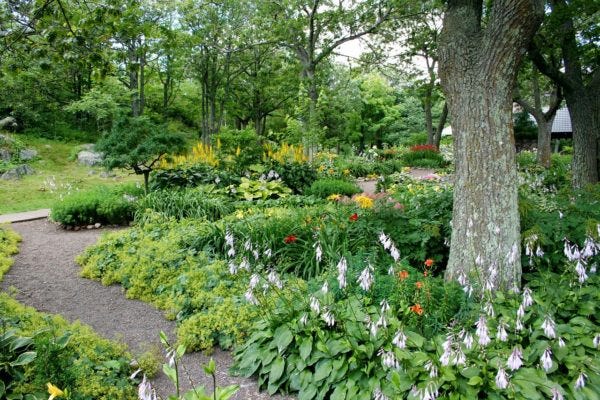
Planting for Bird Nutrition
When choosing plants for your bird-friendly garden, consider the nutritional needs of the birds you are trying to attract to your yard. Warblers require fatty food sources during the fall as they prepare to make their migratory journey. Sparrows, who do not migrate in winter, require fruits such as bayberry or crabapples to survive frigid temperatures.
As you celebrate the arrival of spring and the robins, keep in mind their need for fruits. A variety of plants will ensure that your backyard birds are getting the nutrition they need.
Whether winter or spring, mother nature is unpredictable. Snowstorm or rainstorm, your garden should include conifers. Many species of birds look to conifer bushes for shelter during inclement weather. Additionally, many birds will seek conifer plants to sleep and build nests for their young.
Natural Landscaping
Though it might seem contrary, removing all dead branches from your backyard doesn’t help your goal of growing a bird-friendly garden. Leaving a few dead branches on otherwise healthy trees provides locations for singing posts and perching. The woodpecker is notorious for seeking out the soft dead wood for drumming. Incidentally, if you want to hang birdhouses in your yard, dead trees are your best choice.
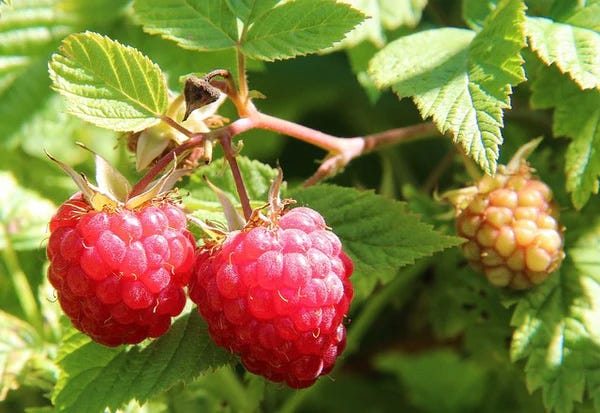
Keeping Thorny Plants Unpruned
As you contemplate the best trees and bushes to use, consider also adding thorny plants. Not only do they offer nesting places and cover from predators, but the fruits they bear add another nutritional option for many species of birds. Blackberry and raspberry plants are an excellent addition to your garden.
Beyond the Birdhouse
Try adding nest boxes to your yard. With close to 50 species that will use a nest box for their young, adding nest boxes will increase the variety of birds you attract. Because each species prefers different nest box materials, research and learn what materials each of the species you hope to bring to your garden desires.
Most importantly, a nest box should meet important requirements like having a way to shed rain, drainage for the bottom of the box, and protection from predators attempting to snatch eggs and the young.
The Benefits of Bird Feeders
No bird-friendly garden would be complete without bird feeders. A visit to a garden center or pet store to look for bird feeders might have you walking out the door empty-handed or overwhelmed. With so many types of feeders to choose from, it’s important to know the specifics of several different types of feeders. These four common feeders are a great addition to any yard:
- Ground Feeders: Commonly referred to as tray or platform feeders, they sit on or right above the ground. The screen enables complete drainage from rain, snow and bird droppings. Because invaders such as squirrels may get into them, some may have covers. They should be placed in proximity of a tree or shrub to allow birds to escape in case of a predator. Sparrows, juncos, doves and blue jays are often frequent ground feeders as well as many other species.
- Nyjer or Finch Feeders: Especially popular with American Goldfinches, these feeders come as either a tube feeder with small ports for thistle or mesh socks which birds can cling to while feeding. Nyjer seeds are tiny, often having a more cost-effective per-pound price for an active backyard. Many perches on Nyjer tubes are also placed above the feeding ports to offer acrobatic goldfinches the option for upside-down feeding.
- Suet Feeders: Most common are the caged feeders where you can place store-bought or homemade suet for your birds. Suet feeders can be hung from poles or trees. One important factor: be careful with using suet in warm temperatures to avoid it from turning rancid. Enjoy the sight of nuthatches, woodpeckers and wrens at your suet feeders.
- Hopper Feeders: Also referred to as house feeders, they are often most distinguishable by their perching ledge. Many hoppers can contain several pounds of feed at a time, making them a convenient choice for the birder who has many bird feeders to tend to. Positioned on a pole several feet off the ground, large hopper feeders will attract larger species such as the Blue Jay, grackle, blackbird and cardinal.

Water Sources
Though birds do get water from their food, your bird-friendly garden should offer a clean water source for drinking and bathing. Birds in all regions of the country are attracted to open water in all seasons. Though their bathing may seem playful, birds need water to cool themselves during the hot summer months. During late fall when migration takes place, many birds seek a water source to replenish what they have exhausted during long flights.
On the flipside of summer, birds need a water source during the cold winter months as their usual sources may be frozen.
- Birdbaths are available in a variety of materials such as plastic, resin, concrete and ceramic. Explore what style and size best suit your needs.
- Keeping your bird bath clean is important for healthy birds. Use a stiff brush to clean it two to three times a week or more if you have a lot of activity at your bath.
- Add water to your bird feeder with no more than three inches at its deepest level.
- Keeping your birdbath well maintained will prove more challenging in the colder months. For the days when the temperatures are below freezing, an electric heating device will ensure you continue to provide a water source.
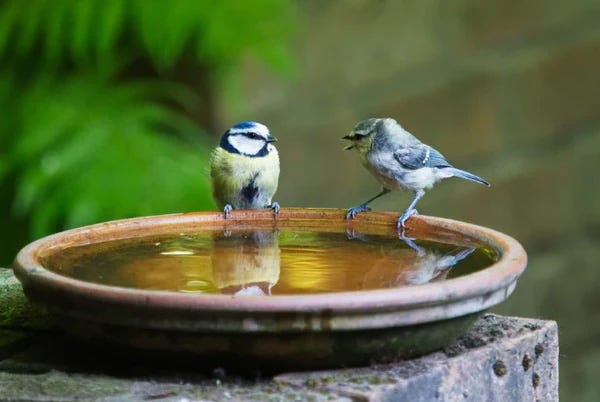
A Few Important Don’ts
Lastly, it’s important to know which plants NOT to include in your bird-friendly garden. If you already have invasive non-native plants growing in your garden, remove them yourself or consult a professional for help. For a complete listing of invasive non-native plants to avoid, consult the website of your nearest botanic garden.
Additionally, you should avoid using pesticides. A better choice is to concoct a mixture that is organic and bird-friendly. Neem oil is just one essential oil that is useful against dozens of chewing or sucking insects that will not harm birds.
Like any outdoor project, the steps to create a bird-friendly garden might seem overwhelming. Like the plants in the garden itself, a bird-friendly garden takes time to flourish, but the rewards you reap will last for years to come.






